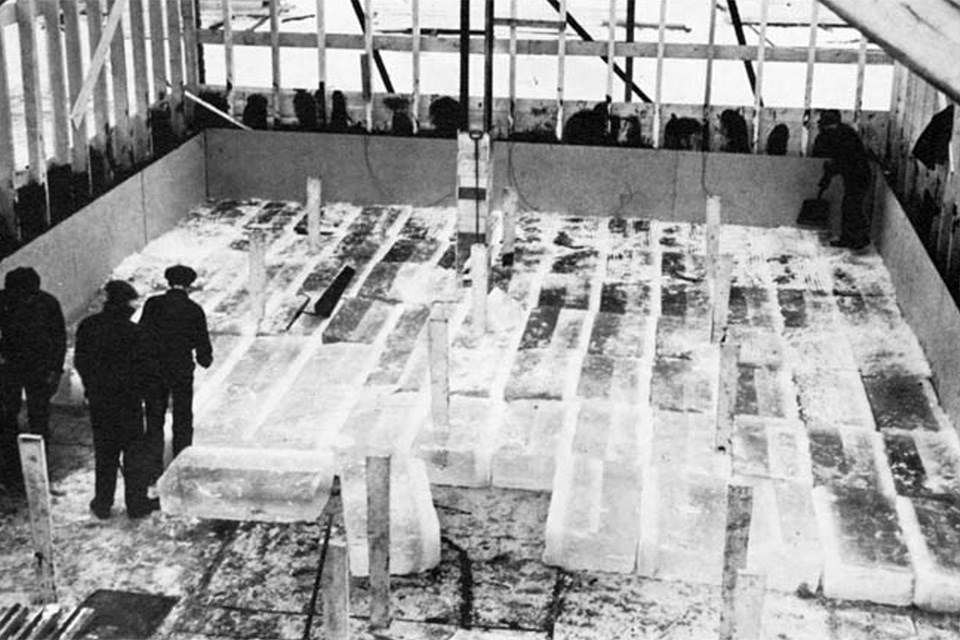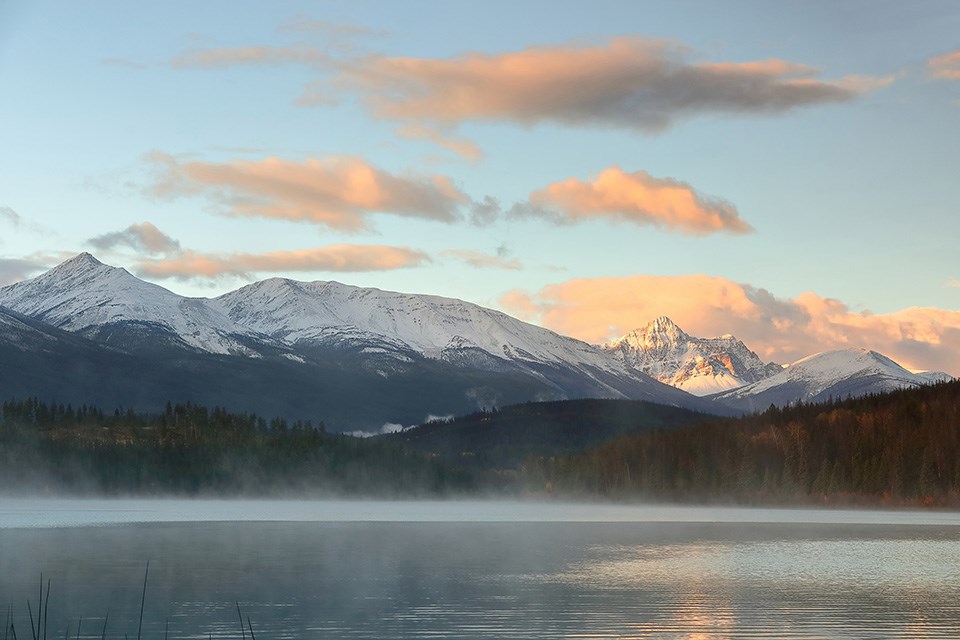Under the serene waters of Jasper’s Patricia Lake lies the remains of one of history’s most peculiar wartime experiments. Project Habakkuk was an audacious idea born during World War II, one that sought to turn a simple concept into a massive solution for Allied forces battling German U-boats. Though it never came to fruition, its legacy remains an intriguing chapter in Alberta’s history.
What Was Project Habakkuk?
Project Habakkuk was a secret Allied experiment launched in the early 1940s under the guidance of British inventor Geoffrey Pyke. His vision? To build an aircraft carrier unlike any other—not from metal or wood, but from ice. Specifically, this aircraft carrier would utilize a material called pykrete, a blend of 85% water and 15% wood pulp. This strange new material was stronger than concrete, resistant to bullets and torpedoes, and melted significantly slower than traditional ice.

Credit: https://www.albertaunderwatercouncil.com/single-post/2016/10/10/diving-jaspers-habbakuk-wreck
The need for such an unconventional warship arose from a problem in the Battle of the Atlantic. German U-boats wreaked havoc on Allied supply routes, particularly in the mid-Atlantic, where land-based aircraft could not provide cover. A floating, unsinkable aircraft carrier could fill that gap and ensure supplies reached their destinations safely.
The name “Habakkuk” was inspired by a Bible verse (Habakkuk 1:5): “Be utterly amazed, for I am going to do something in your days that you would not believe, even if you were told.”
A Prototype in Alberta
While plans were drawn up for a carrier nearly 2,000 feet long and capable of housing hundreds of aircraft, the Allied forces decided to test their concept on a smaller scale. Canada, with its frozen lakes and remote locations, became the perfect testing ground! Patricia Lake in Jasper National Park was selected due to its hidden location and access to railway facilities.
Between February and June 1943, a small group worked on site at the lake, crafting a 1-to-50 scale model of the iceberg carrier. The prototype measured 60 feet long, weighed 1,000 tons, and was equipped with a cooling system to keep it intact during warmer months. Though rudimentary, the test design proved the material floated and resisted damage.

However, this experiment faced several big challenges. The cooling system had engineering headaches, and the resources required to build a full-scale carrier were immense. The final vessel would need 300,000 tons of wood pulp, 35,000 tons of insulation, and a staggering amount of steel for reinforcement. These challenges, combined with advancements in aviation technology (longer-range bombers now provided the air coverage Habakkuk was designed to address), led to the project’s cancellation in late 1943.
Could It Have Worked?
While pykrete amazed scientists with its durability, the immense technical and resource constraints of creating a full-scale ice aircraft carrier cast doubt on its practicality. At a very high cost and requiring over 35,000 workers, its feasibility as a wartime solution was ultimately deemed unrealistic. Still, the unique material demonstrated undeniable potential, and its discovery is considered a fascinating “what if” in military history.
Patricia Lake Today
Today, the remains of Project Habakkuk rest submerged in Patricia Lake. Though the ice has long since melted, remnants such as wooden beams and refrigeration pipes lie scattered across the lake bed. A commemorative plaque near the wreck marks the site of the prototype, ensuring this quirky slice of wartime innovation is never forgotten.
For adventurous visitors, the site offers a glimpse into a time when inventive ideas knew no limits. Divers can go into Patricia Lake to see the wreckage firsthand, while others can see some of the details from the shoreline.
Explore Alberta’s Hidden Past
Project Habakkuk is just one of the countless stories that make Alberta’s history rich and unique. This summer, step off the beaten path and explore the province’s fascinating heritage. Visit Jasper to discover the story of this frozen feat or dig deeper into Alberta’s wartime contributions by stopping at sites like the Alberta Aviation Museum in Edmonton. You’ll be amazed by the incredible tales told right in your own backyard.
Nerissa McNaughton is a freelance writer and a contributor to Great West Media. This story was written for Great West Media's Hot Summer Guide advertising feature. The Hot Summer Guide is a special feature about summer activities, bucket list adventures, staycation options, road trips, attractions, events, and road trip-worthy food & beverage destinations across Alberta. It is not written by and does not necessarily reflect the views of the editorial staff.



